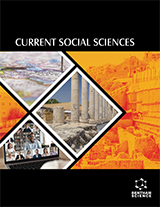Abstract
The aim of this chapter is to examine how the lead user approach successfully can be applied in the public sector and how it can contribute to collaborative innovation. This chapter is based on a case study of lead user innovation in the Danish Ministry of Taxation. In the last decade, the Ministry has increased the participation of citizens and thereby strengthened the role of the users in the innovation process. Encouraged by studies showing that users contribute more to the innovation than producers, the Ministry wanted to examine whether lead users could also contribute to public innovation on complex problems. This was done by doing a lead user study concerning bookkeeping. On the basis of the project, it is described and discussed how the lead user approach can be used to make collaborative innovation happen and increase the outcome of the innovation process. The conclusion is that the lead user approach can be used in the public sector and it increases the possibility for radical innovation. However, development of the lead user approach is needed. Firstly, by adding a fifth phase to the existing lead user approach to be sure innovation happens in a collaborative way, and secondly, by expanding the bottom lines to the complexity in the public sector and thirdly, by updating the methods used to engage citizens.
Keywords: Bookkeeping, bottom lines, collaborative, complex, innovation, involvement, lead user, methods, participation, power, public sector, taxation, trends, user needs.


.jpg)










